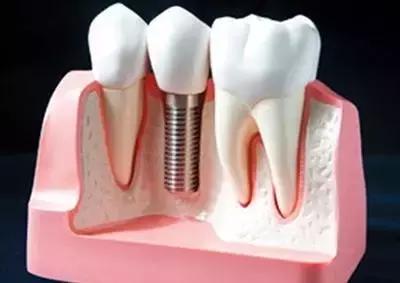How much do you know about dental implants?
The invention process of dental implants
An epoch-making event in the history of dental implants occurred in 1952. In a laboratory at a university in Sweden called University of Lund, a team led by orthopaedic surgeon Professor Per Ingvar Branemark was working on a project on bone microhealing. They twisted a titanium alloy column into the rabbit's thigh bone, and when they tried to remove the columns from the rabbit's thigh bone again a few months later, they found that the columns were inseparable from the bone tissue and grew together, a phenomenon that Professor Branemark called Osseointegration.
As a result, Professor Branemark's team turned its focus to the use of titanium in human bones, including anchoring titanium nails in the jaws to replace lost teeth. After numerous studies and experiments, Professor Branemark implanted the first pure titanium root implant tooth in human history in 1965 into the mouth of a volunteer named GostaLarsson.
The advantages of dental implants
Compared with traditional dentures, implants are deeply rooted in the gums, deep-rooted, firm and powerful, and have the same prestige when chewing food. It is not only "tooth root" stable, can chew food like real teeth, but also "tooth crown" beautiful, enough to be real. No wonder some people call it "the third pair of human teeth".
"
In the process of implantation, there is no need to suffer from the pain of grinding real teeth, not to mention the discomfort caused by the steel wire clasps and plastic plates of traditional dentures. I remember a retired man who had changed six sets of dentures in six years. He was pessimistic and depressed because his dentures were loose and unable to eat. The implant tooth became his "great savior". Now he can not only chew on delicacies such as fish, but also Hale and lively and socially active. He said to everyone: in the past, we only heard that we could reap what we sowed, but now we know that there are still teeth in the world.
"
Maintenance of implant teeth
As the saying goes, "divide into three, divide into seven." Dental implants also need to be taken good care of and be kind to.
Oral hygiene can not be ignored that good oral hygiene is an important condition to ensure successful implantation. If bacteria grow wantonly near the abutment (the neck of the implant) and the gingiva, but not removed in time, it will cause inflammation of the tissue around the implant. Over time, it leads to the progressive absorption of alveolar bone, resulting in a "waste of previous efforts"-loosening and falling off of implant teeth. Regular review, do not slack off the general requirements after the completion of dental implants 1, 3, 6 months and 1 year, to the hospital for review, and then once a year. Mainly through clinical and X-ray examination to check the use of implant teeth, and there are medical staff to carry out the necessary maintenance of implant teeth.
Lang Xin has his own feet and will come back across the river and the sea. By generation guru
Self-care, strengthen the management of planting, do not think that everything will be all right. Only when you know how to take care of yourself can you get twice the result with half the effort. The most important thing is to keep cleaning after getting up, before going to bed and after three meals every day. Attention should be paid to the marginal line between the root of the tooth and the crown of the restoration and its "neighbors". Every 1-2 weeks, a special plaque staining indicator can be used to check the plaque attachment of implants. "excellent weapons", reasonable methods.
Generally speaking, all kinds of toothpaste sold on the market can be used. It is best to choose those soft hairy toothbrushes and soak them in hot water before use to make them softer so that they can be "comprehensive" when brushing. Sometimes it is necessary to use a small straight brush of special shape to shuttle back and forth flexibly between the necks of two adjacent implants to ensure that the brush can reach every corner. For ordinary toothbrushes, it is required to brush all sides of dental implants by rotating vertical brushes up and down. Never brush insolently from left to right to avoid damage to the tooth surface.
Tips
Not everyone is suitable for dental implants. Patients need to treat other oral diseases before implantation, such as pulling out the roots of loose teeth that cannot be retained, filling tooth decay, treating periodontal disease, removing bad dentures, and so on.
- Prev

What are dental implants afraid of? Afraid of pathological changes!
"my mother has almost lost all her teeth. I want to give her a dental implant, but I've heard that there will be complications. Is that true? "what on earth is an implant tooth? Is it safe or not?
- Next

Sedum planting course for beginners
Suitable for novice Sedum family succulent plant planting course, some common slow seedling problems, planting problems have been talked about, after reading this article, you can probably know.
Related
- Fuxing push coffee new agricultural production and marketing class: lack of small-scale processing plants
- Jujube rice field leisure farm deep ploughing Yilan for five years to create a space for organic food and play
- Nongyu Farm-A trial of organic papaya for brave women with advanced technology
- Four points for attention in the prevention and control of diseases and insect pests of edible fungi
- How to add nutrient solution to Edible Fungi
- Is there any good way to control edible fungus mites?
- Open Inoculation Technology of Edible Fungi
- Is there any clever way to use fertilizer for edible fungus in winter?
- What agents are used to kill the pathogens of edible fungi in the mushroom shed?
- Rapid drying of Edible Fungi

